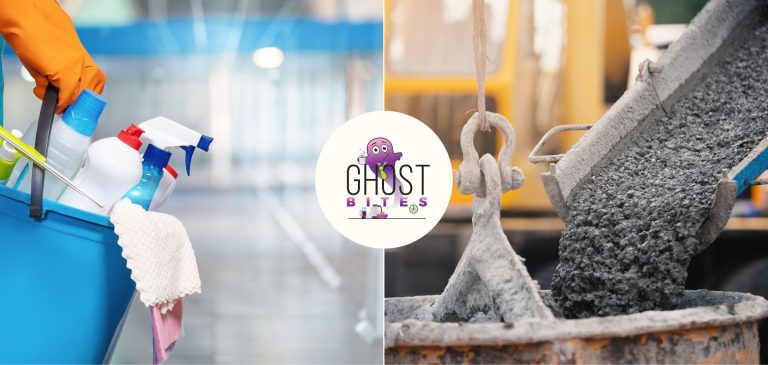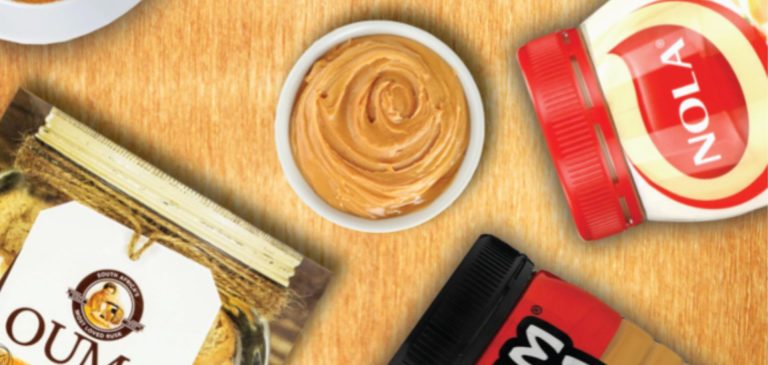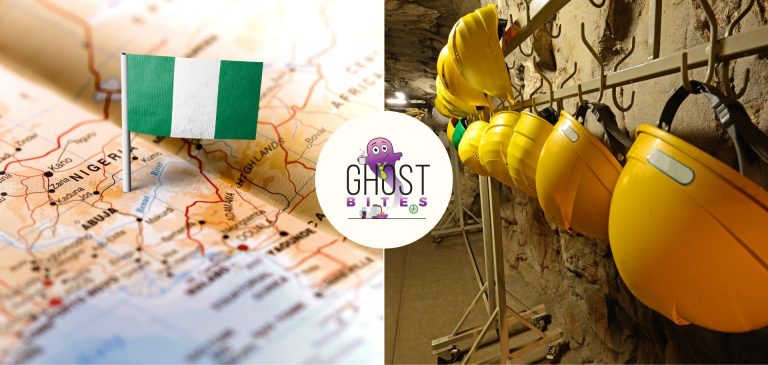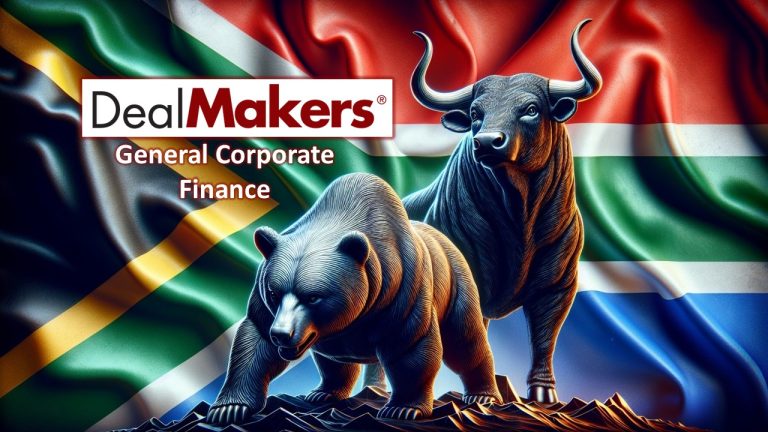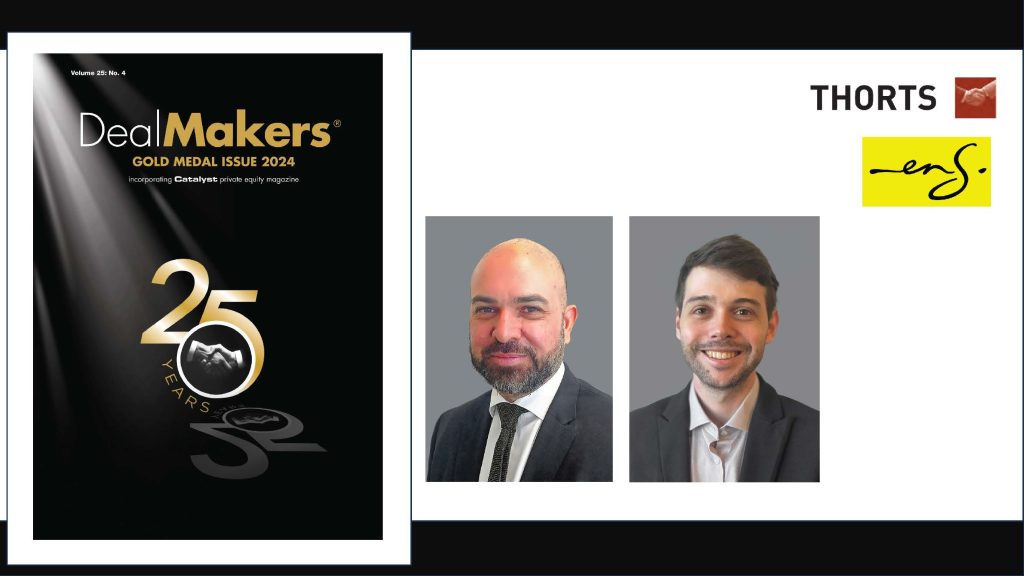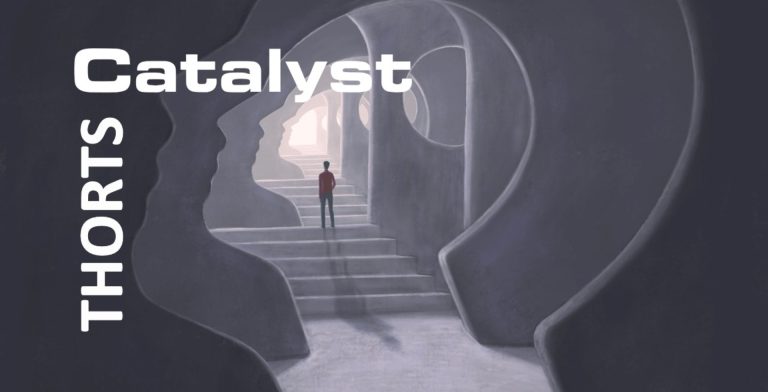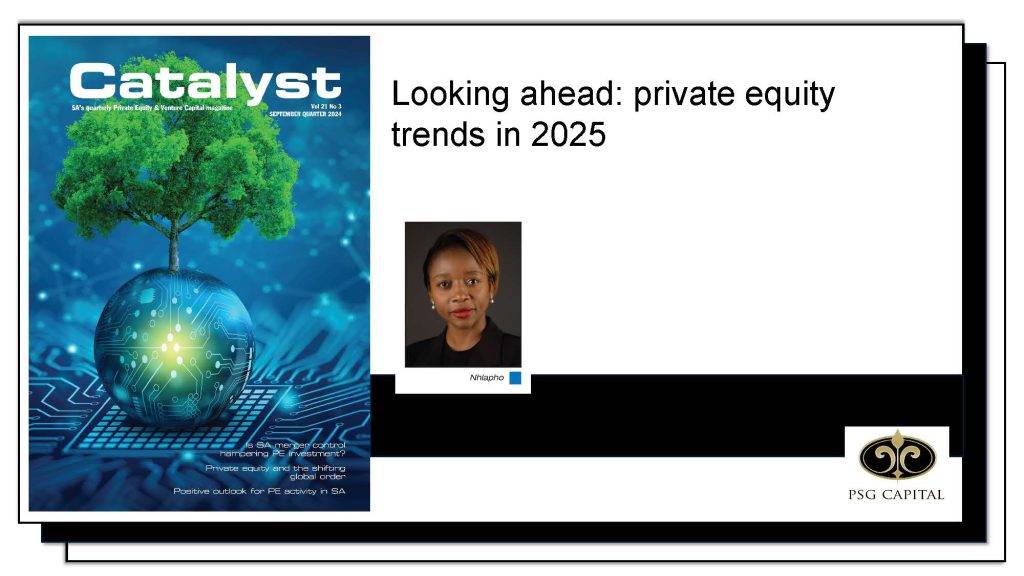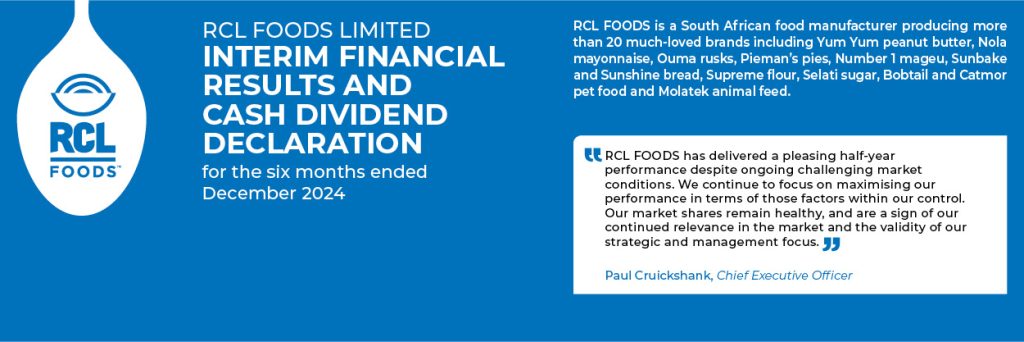
There isn’t much of a narrative at AfroCentric – and not much in the way of profits, either (JSE: ACT)
This is a rather strange approach to delivering bad numbers
AfroCentric released results for the six months to December. They are objectively awful. Sure, the comparative period is the 12 months to June 2024 due to a change in year-end, so one would expect profits to be “down” roughly 50% as we are comparing 6 months to 12 months.
Alas, although revenue was 51.8% lower (and hence in line with a reasonable expectation), AfroCentric actually made a loss in the six months to December. At HEPS level, they managed a paltry 3.80 cents in earnings – down 90.6% vs. the comparative period.
Sadly, the company puts zero effort into explaining why. If there was a laziness award for financial reporting, this would be gold star stuff. Sure, the endless pages of financials are there, but where is the management narrative? Where is the outlook?
I can only assume that for whatever reason, AfroCentric doesn’t want you to buy their shares. There’s no other explanation for why such a small company puts such little work into explaining this trajectory.
As a rand hedge, Aspen was negatively impacted by recent rand strength (JSE: APN)
The market loved the constant currency numbers, though
The six months to December at Aspen is a great example of how severe the impact of currency movements can be. Revenue was up 9% at constant exchange rates, yet it was only 4% higher when reported in rand. This trend carries on all the way down the income statement until you get to normalised HEPS, up 17% at constant rates and only 5% as reported.
One of the negative impacts on HEPS was a 20% jump in normalised net financing costs, driven by higher rates and debt levels. Although net leverage remains comfortably within the targeted range, the bankers are getting a bigger slice of the pie than before.
From a margin perspective, the Manufacturing segment showed the largest change. The gross profit margin jumped from 5.3% to 15.9% as the underlying mix and business model evolved. Despite revenue being flat at constant rates, normalised EBITDA more than doubled!
Overall, there’s bullish sentiment heading into the second half of the year. They also expect a strong period of cash flow, as well as lower effective interest rates, so that should do wonders for profit conversion. The market really liked what it saw, with Aspen closing nearly 12% higher on the day!
A mixed result at Bidvest (JSE: BVT)
And plenty of new debt for acquisitions
The six months to December 2024 won’t go down as one of their best at Bidvest. Revenue increased by 6%, but trading profit was flat as margin contracted by 66 basis points. Group HEPS was up just 3%. Even worse, HEPS from continuing operations actually fell by 1%. The interim dividend was up just 1%, despite cash generated from operations increasing by 18%.
You might think that the Automotive segment was where the problems were found, given the level of disruption in that space. Instead, due to management actions taken, that segment actually grew profit by 14.1%! Some of this is due to acquisitions like Dekra, so don’t assume that this is entirely thanks to the dealerships business.
The problem children were the Commercial Products division (down 26.9% due to a massive slump in renewable energy product sales), Adcock Ingram (trading profit down 17% as consumer spending came under pressure and pharmaceutical wholesalers reduced their stock levels) and the Freight division, with an 11.9% drop in trading profit impacted by issues like maize exports.
The winner? Bidvest Services South Africa, up 16% with great results across the underlying offerings. As people have returned to work and everyone is getting out and about again, so the demand for property services has increased.
At the same time as these pressures, net debt jumped substantially due mainly to corporate actions. This drove a 17.2% increase in interest charges. Bolt-on acquisitions are part of the game at Bidvest, so there will be periods like this in which they ramp up the debt. There will also be disposals, with the sale of Bidvest Bank and FinGlobal still subject to regulatory approvals.
Decent growth at Clientèle – and a lesson in why HEPS is so important vs. EPS (JSE: CLI)
The insurance industry is putting out strong results at the moment
Clientèle has released a trading statement dealing with the six months to December 2024. The range for HEPS is frustratingly wide, with expected growth of between 2% and 17%. The mid-point suggests around 10% growth, which is a decent outcome.
But why the trading statement? After all, the trigger to release one is an expected change of at least 20%. The answer lies in Earnings Per Share (EPS), expected to be up by between 222% and 245%. A bargain purchase gain of R469 million on the 1Life acquisition is the major driver here.
Therein lies a very important point: although the price paid for the 1Life acquisition reflects management’s approach to deals and certainly shouldn’t be ignored, the jump in EPS is clearly not an indication of sustainable earnings growth. For that, we must look to HEPS.
What happened to Italtile’s dire warnings about the manufacturing segment? (JSE: ITE)
And what will life-after-two-pot look like?
Last year, Italtile was telling anyone willing to listen that the manufacturing side of the business was in trouble. Overcapacity in South Africa was a real issue, putting pressure on performance for manufacturers dealing with a fixed cost base.
Now, with the release of interim results, that narrative has all but disappeared – in the SENS announcement, at least. There’s simply a note that this is a deflationary environment for ceramic tiles, forcing the manufacturing business to look for cost efficiencies. That’s a much less severe narrative than we saw before. If you read the full set of results though, you’ll see some of the difficult language coming back when they talk about the manufacturing business.
With system-wide turnover down 1% for the period, it’s hard to imagine that the overcapacity issues in the market have really become that much less of a problem, so I tend to believe the detailed narrative of concern vs. the short-form SENS announcement that almost brushes over the issue. Capacity utilisation was 76% in Q2 and we know that number was better than Q1 (even though they don’t give the percentage). Italtile acknowledges the benefit of the two-pot system in their business in Q2, so I don’t think they are extrapolating the Q2 period.
Despite the dip in system-wide turnover, they managed to grow trading profit by 3% and HEPS by 4%. Although they are heavy on narrative and pretty light on Q1 vs. Q2 numbers, it’s clear that they were thrown a lifeline by the market at the end of 2024. In the end, the Manufacturing segment only saw its profit before tax decrease by 5% based on revenue decreasing by 2%. In Retail, sales were up 3.6% and profit before tax followed suit.
Alas, the deterioration in sentiment in 2025 has taken the shine off performance at the stores, though we must wait for full-year results to know for sure. For now, we know that the first two months of the calendar year saw flat revenue in the retail business and weaker revenue in manufacturing.
Italtile is down 19% year-to-date. My choice in this sector, Cashbuild, is down 13%. Over 12 months, Cashbuild is up 29% and Italtile is up just 7%.
The JSE’s return on equity has moved above 20% (JSE: JSE)
But keep an eye on the payout ratio
This is always a fun thing to learn for new investors: the JSE is listed on the JSE! The company that actually owns and operates the exchange is listed on its own product. Hence, the share code JSE: JSE.
For the year ended December 2024, HEPS improved by 9.6% and the dividend increased by 5.6%. Let’s face it: these aren’t amazing growth numbers when you consider the backdrop of the GNU and all the improved sentiment on the local market. It’s worth highlighting that 37.8% of operating income is non-trading in nature i.e. not linked to volumes on the local market. When you build a more resilient model, you don’t get to participate fully in the upswings. Of course, you also don’t suffer as much in the downswings!
The market treats the JSE as a dependable cash cow that generates great returns on shareholder equity. With return on equity moving up from 19.4% to 20.2%, they’ve certainly managed the latter. The decrease in the payout ratio does call the former into question, particularly when viewed in the context of a 1.5% decrease in net cash from operations.
The JSE has to hold huge cash and bond balances, so a favourable interest rate environment makes a difference to them. Net finance income was up 21% year-on-year.
The share price is up 44% over 12 months and is even in the green year-to-date, unlike so many of the companies listed on the exchange.
Separately, the company announced that Dr Suresh Kana will retire as lead independent director (and chairman of a few committees) after nine years on the board. Ben Kruger is taking over as the new lead independent director.
Earnings up and dividends still on hold at MAS (JSE: MSP)
But there’s a deal on the table that could bring them back sooner
When MAS took the decision late in 2023 to stop its dividends and focus on getting ready for difficult debt maturities in the subsequent years, the market had a complete panic. The share price nosedived, as South African property sector investors love dividends.
Today, the price is back where it was before the plunge. If you bought that dip right at the bottom, you’re up around 50% since then!
Patience is still the order of the day though, as there’s no dividend despite a 13.1% increase in distributable earnings in the six months to December 2024. The tangible net asset value per share increased by 7.2%, so that also headed in the right direction. Overall, they’ve enjoyed strong performance in the underlying portfolio as well as the DJV joint venture.
The major bond maturity that they are focusing on is in 2026. They’ve done a huge amount of work in securing debt finance to help with this. Even then, unless the proposed transaction with respect to the investment in the joint venture is implemented, dividends are on hold until at least the 2027 financial year and further asset disposals are likely to be required.
It’s interesting that there are such difficulties despite the loan-to-value being 25.6%. There’s an interesting lesson here, in that leverage ratios don’t tell you everything. You also have to consider availability of debt at the time of maturity, which is where the problems are in this case, as this means cash needs to be available for the redemption.
Along with the complexities of the joint venture relationship, this is why both Moody’s and Fitch have downgraded MAS’ credit ratings. The problem is that this can become a death spiral, as the downgrades make it even harder to raise debt. They also tend to increase the cost of debt.
So, the announced transaction related to the joint venture is clearly critical. It will see the joint venture repurchase the 60% held by PKM Development, leaving MAS will full control of the joint venture. The repurchase would be priced at a premium, which is unsurprising given how much trouble MAS is in, leading to a dilution of MAS’ tangible net asset value by an estimated 7.4%. There are a bunch of assumptions in that dilution calculation, so the final number could be quite different to that.
It’s not a completely painless solution for the balance sheet, as there’s a cash payment involved here that MAS is able to partially fund via an issue of unsecured debt at 10% per annum. A minimum cash payment of €30 million is required and hence the portion funded through this debt is likely to be just under €60 million.
But here’s the really good news: if the deal goes ahead in the next few months, MAS dividends could result as soon as September 2025.
It’s all to play for here!
Metrofile’s geographical complexities are hurting them (JSE: MFL)
It’s time to focus on home
Metrofile has gone from one disappointment to the next. The numbers for the six months to December reflect a 4% drop in revenue excluding Tidy Files (which they opted to exit in the prior year) and an 11% decrease in operating profit. EBITDA fell 8%. It only gets worse further down the income statement, with HEPS down 38% and the dividend per share dropping by 43%!
Yay for net debt coming down by 3%. At least there’s a faint silver lining here.
The reality is that the geographical exposure is a problem that needs to be solved now. Revenue in the South African business from continuing operations increased by 3% and operating profit jumped by 19%. Turnaround initiatives there seem to be working. Sadly, Rest of Africa saw revenue fall 10% and operating profit collapse by 67%. Middle East experienced revenue down by 7% and a deterioration back into an operating loss of R2 million.
The focus for the rest of the year is on free cash flow generation and further degearing of the balance sheet. They’ve also flagged that there will be a geographical review of the business, so perhaps we will see some major changes.
MTN Ghana shows what is possible in Africa (JSE: MTN)
Here’s how things are supposed to work
After the somewhat traumatising numbers released by MTN Nigeria, the results at MTN Ghana are quite the palate cleanser. For the year ended December 2024, they had healthy top-line growth (revenue up 34.5% and subscriber numbers all in the green) and they converted that into solid profits, with EBITDA up 31.3%. Although there’s a slightly contraction in EBITDA margin, that’s a strong growth rate. It’s worth noting that normalised EBITDA margin (after adjusting for a management fee reversal in 2023) would’ve been slightly up.
Profit after tax increased by 26.3%, so it was an excellent period overall despite the best efforts of the Ghana government to get their hands on more of the profits through tax assessments. The tax charge for the period was 59.7% higher year-on-year.
Capex only increased by 7.6%, which means that capex intensity fell. That’s good news for free cash flow.
The shift in usage is something to behold, with data revenue up 53.8% and voice revenue down 0.9%! The fintech side has a good story to tell, with MoMo revenue up 54.4%.
With medium-term guidance for service revenue growth in the high twenties range (in percentage terms), alongside the company’s ability to maintain and even grow margins, the business in Ghana shows why MTN goes through so much pain to be in Africa.
Mustek’s earnings have plummeted (JSE: MST)
And yet the share price is up 37% over 12 months
Corporate law enthusiasts (and active investors) would’ve sunk their teeth into the TRP ruling that Mustek released last week. You’ll find it here. It shows how intricate takeover law becomes, particularly when assessing concert parties and how this impacts a takeover offer.
Against this backdrop and all the uncertainty it creates going forwards in terms of ownership of the company, Mustek’s earnings have fallen severely. HEPS will be between 18.27 cents and 27.40 cents, a nasty drop of between 70% and 80%. They attribute this to the “prevailing local and economic challenges” faced by the business.
So how has the share price managed to retain its gains when earnings have fallen like this? The answer lies in the mandatory offer to be made by Novus (and its concert parties), structured as an offer of R13 per share in cash, or R7 per share plus one Novus share, or no cash and two Novus shares. Mustek is currently trading at R14.05 and Novus at R6.86 per share, so there’s a slight differential but not enough for any arbitrage.
In the absence of the offer, it’s hard to imagine that Mustek could maintain this share price. The latest earnings suggest 22.8 cents at the mid-point. If we double this for an elementary view of annualised earnings, the current share price is a P/E multiple of over 30x!
Detailed results are due for release on 6th March. Perhaps it will become clearer why the Novus management team wants to own more of this thing at this price.
PPC rallied on much stronger EBITDA margins (JSE: PPC)
Revenue is helpful, but margins pay the bills (and shareholder returns)
PPC released an operational update for the ten months to January 2025. Under the recently appointed CEO, their turnaround plan is called Awaken the Giant. They may as well have called it Awaken the Margins.
For the ten months, revenue fell by 3% but EBITDA jumped by a juicy 20%. That’s a 320 basis points improvement in EBITDA margin.
If we dig deeper, we find that revenue in South Africa and Botswana was up 2% despite sales volumes being slightly negative. Despite this modest growth, EBITDA increased by an impressive 32%, taking EBITDA margin from 11.4% to 14.8%. That’s even better than the interim period, which had margin of 13.7%. To add to the good news story in that business, free cash flow was 90% higher and the segment was in a net cash position of R106 million at the end of January.
In Zimbabwe, volumes were down 9% (as was experienced in interim results) and revenue fell 12% measured in rand. Again, EBITDA bucked the trend here, up 6%. This improved EBITDA margin from 21.6% to 26.0%. You may have noticed that the business in Zimbabwe operates at structurally higher margins than South Africa and Botswana. Zimbabwe improved its free cash flow generation, increased the dividends declared to the mothership PPC and still had $13 million in unencumbered cash at the end of January.
Overall, this is a strong trajectory from an earnings and cash perspective, further supported by an expectation for capex to be slightly below guidance for the full financial year. Lower capex means higher free cash flows. This must always be balanced against the risk of insufficient reinvestment in the business.
PPC is pushing ahead with the plan to increase capacity in the Western Cape, with the project in its final design stages before going to the board for approval. In line with what we’ve seen elsewhere in the group, the focus of the new plant is to achieve lower-cost production and better margins, which makes it value-adding to shareholders without relying on market growth.
The announcement ended on the news that the board will consider a dividend for the full year. A capital markets day is planned for 27 March to give more details on the turnaround plan and the strategy going forwards. Overall, the market saw more than enough here to justify the share price closing roughly 14% higher on the day!
Yum Yum numbers at RCL Foods (JSE: SNT)
And the market liked them, too
RCL Foods closed 5.5% higher after releasing numbers for the six months to December 2024. The market clearly enjoyed seeing revenue from continuing operations up by 5.4%, driving a substantial increase in underlying HEPS from continuing operations of 28.9%!
There’s also an interim dividend of 20 cents per share vs. nil in the comparative period.
Aside from the partial recovery of the additional levy raised by the South African Sugar Association in the 2023 financial year after Tongaat and Gledhow suspended payment of their industry obligations, there were also better results in the Grocery and Baking divisions. Interestingly, Sugar saw a dip in margin vs. a very strong base period.
I wasn’t surprised at all to see that Ouma Rusks have 60% market share. Is there anything more South African than a box of Ouma in the cupboard? Conversely, it’s odd to see that pet food came under pressure. I can only assume this relates to dogs, as cat owners know that they are never given a choice but to keep the food bowls full!
RCL Foods values the Ghost Mail reader base. For more details on the earnings, refer to this piece placed by the company.
Santam releases full details after a great year (JSE: SNT)
Insurance revenue and underwriting margins went the right way
Santam, like most of the insurance sector right now, had a great time in the year ended December 2024. HEPS jumped by a pretty spectacular 51%, although I must highlight that the full-year dividend only increased by 8.5%.
Before we dig into that payout ratio, we should deal with the drivers of the higher earnings. Group insurance revenue improved by 12% and the conventional insurance net underwriting margin jumped from 3.5% to 7.6%. Together with other factors like growth in the alternative risk transfer business and high returns on shareholder funds, it was a year to remember.
Nothing can ever be perfect, of course. Although share of gross written premium of Shriram in India and Pacific & Orient in Malaysia grew by 20%, net insurance results declined by 3%. They blame the high base for this move.
Back to the dividend. A dig through the detailed report reveals that dividends are declared with reference to the group solvency ratio, not just HEPS. Where they are well above the upper end of the target ratio over the medium to long term, they will consider a special dividend. The dividend that has been declared has brought the capital solvency ratio back within target range, so there’s no sign of another special dividend right now.
Total dividends for the year came to 1,400 cents per share. Based on the current Santam share price, it trades on a yield of 3.5%. Together with a share price performance of 33% over the past 12 months, this tells you that the market cares more about growth in the business than growth in the dividend.
Nibbles:
- Director dealings:
- A director of a major subsidiary of Lewis (JSE: LEW) sold shares worth R8.9 million. I can’t help but wonder whether the strong end they had to 2024 has washed away to some extent in 2025.
- An associate of a director of Visual International (JSE: VIS) subscribed for shares in the company worth R5 million at a price of 4 cents per share. The current market price is 2 cents per share.
- The CEO and founder of Datatec (JSE: DTC) bought shares in the company worth R4.8 million. He quite regularly adds to his stake in the company that he built.
- A non-executive director of KAP (JSE: KAP) bought shares in the company worth R999k.
- A director of Motus (JSE: MTH) bought shares worth R476k.
- Acting through Titan Premier Investments, Christo Wiese has bought R300k worth of ordinary shares in Brait (JSE: BAT).
- The CEO of KAL Group (JSE: KAL) bought shares worth R43.5k.
- Oddly, the CEO of Crookes Brothers (JSE: CKS) sold shares worth just R1k.
- MC Mining (JSE: MCZ) announced that the key condition to the second closing of the KDG deal has been met. The first close saw KDG subscribe for an initial stake of 13.04% in MC Mining. With regulatory approvals now met for the largest deal, the parties have agreed to nine instalments to reach the aggregate amount of $77 million for the share subscription. With all said and done, KDG will hold 51% of MC Mining. The final payment is expected to be in February 2026.
- NEPI Rockcastle (JSE: NRP) has released a circular dealing with the payment of the recently announced dividend. There’s a big change this time: no scrip dividend is being offered, presumably in an attempt to avoid further dilution in distributable income per share. Instead, shareholders can choose between a cash dividend or a reduction of capital, which is ultimately a tax deduction.
- Barloworld (JSE: BAW) is in the process of investigating potential export control violations in respect of sales of certain goods to its Russian subsidiary. The US Department of Commerce, Bureau of Industry and Security (BIS) has granted an extension of the deadline for this to be completed. Barloworld will therefore need to submit a final narrative account of voluntary self-disclosure by 2 June 2025.
- Sappi (JSE: SAP) is offering €300 million in senior notes due 2032. They will use €240 million of this to redeem all outstanding senior notes due 2026. The rest is for general corporate purposes. Unsurprisingly, the new issue is of sustainability-linked senior notes, with Sappi able to tap into that kind of funding due to the nature of its business. The company separately announced that a new document about the group is available on its website, but they gave the home page link instead of where you’ll actually find the doc. After a few minutes of searching, I lost interest. It’s really not that difficult to include the specific URL in the SENS announcement.
- It’s not uncommon to see large property funds go on major asset disposal programmes when they need to make substantial changes to their portfolios. Assura (JSE: AHR) is one such example, selling seven assets for £64 million into a joint venture in which they retain a 20% stake and earn management fees. This takes them to a total of 30 assets sold since the start of the financial year for a total of £200 million. The weighted average net initial yield on sale is 4.8% and they’ve used the proceeds to reduce the debt used to buy the £500 million private hospital portfolio that was acquired in August 2024 at a 5.9% yield. In other words, they’ve bought low and sold high, which is what you want to see! The pro-forma loan-to-value will reduce to 47%. There is still very little volume in this fund on the local market.
- Sygnia (JSE: SYG) shareholders approved the odd-lot offer. It will be priced based on the 30-day VWAP calculated with reference to 7 March, so the price for the offer will be announced on 10th March. Remember, an odd-lot offer only applies to holders who have fewer than 100 shares. At the current share price, that’s a position of roughly R2.3k and lower.

